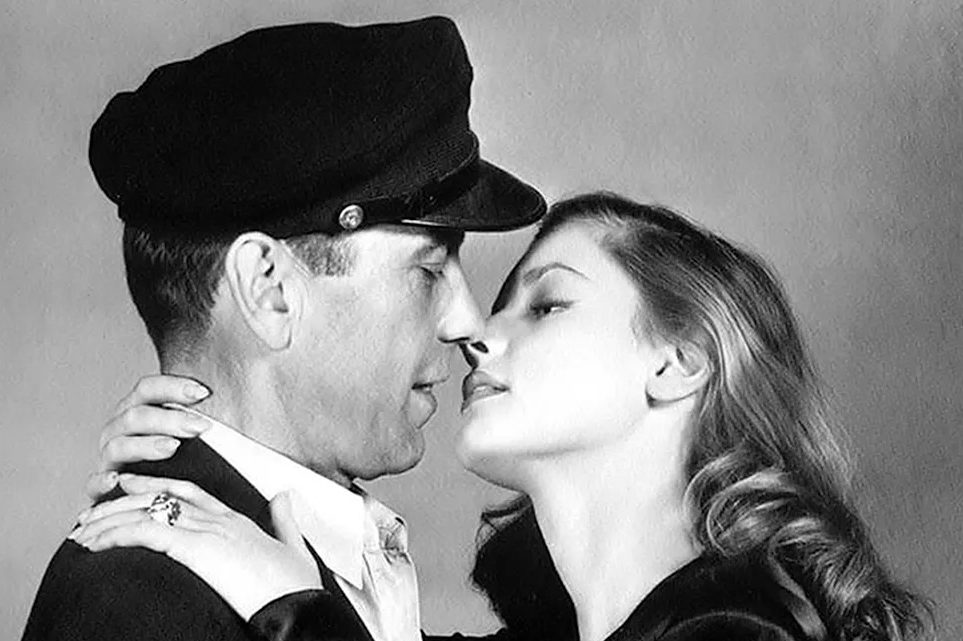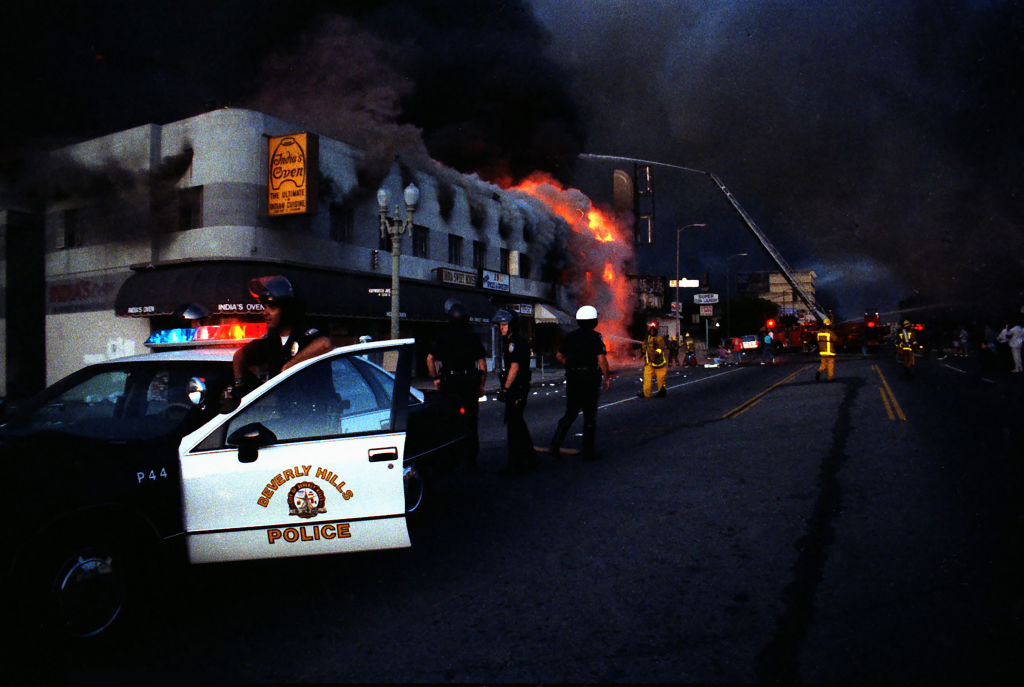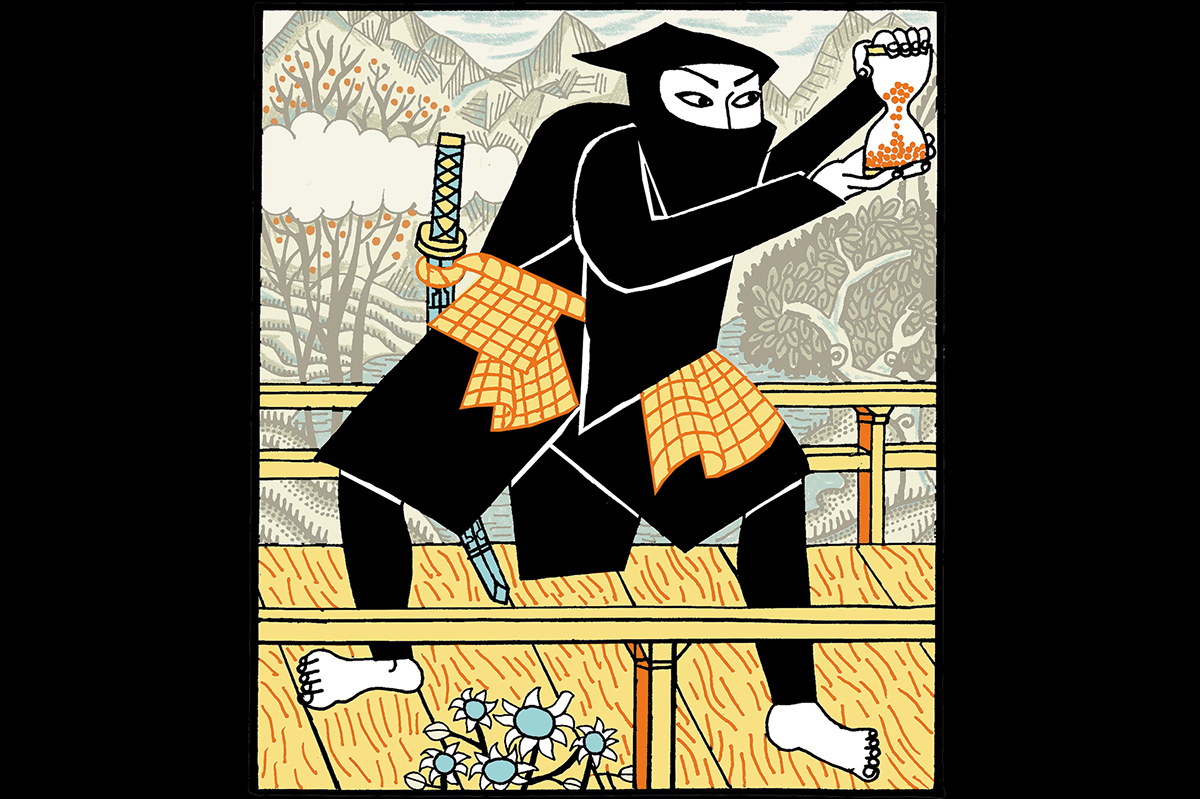Whenever an actor and an actress begin an affair on the soundstage they like to believe they are the new Burton and Taylor. Actually they’ll be lucky to resemble Christopher Timothy and Carol Drinkwater, who had a fling on that vet program — and now here are Humphrey Bogart and Lauren Bacall to live up to as well. Of their love story, William J. Mann avers: “It was wonderful; it was passionate; it was complicated.”
Also, it was creepy. Bacall was nineteen, Bogart forty-five. There was a “significant power differential between them” when they met in 1944 during the filming of To Have and Have Not. Mann is probably pointing the finger at Bogart, the established Hollywood star. Yet it is surely Bacall, the ingénue, who had potency and was the one in control, telling Bogart, with maximum suggestiveness, how to whistle: “You just put your lips together — and blow.”
Bogart, we are told (several times) was always “wounded, vulnerable and filled with self-doubt”; he was “wounded and guarded”; he was “belligerent, wounded, lonely.” Why might this be? Because, born in 1899 of Dutch ancestry, though he had a pampered upbringing, his parents, New York blue bloods, spared him hugs. There was no parental affection from his father, a wealthy doctor addicted to morphine, or his mother, an illustrator of children’s books — hence Bogart’s “sadness, rage and an abiding sense of inferiority.” So there we are.
How pitiful having to be raised instead by servants, nannies and cooks. A weakling beaten by school bullies, Bogart was remembered as “sullen” and “spoiled.” He was to be seen on a horse, trotting through Central Park attired in bespoke jodhpurs. In later life he’d be wary of anybody effeminate, telling reporters: “I never played theater as a kid, and I didn’t like boys who did. They were sissies.” Yet it was Bogart who had a “sissy reputation,” enthralled by Alla Nazimova and Sarah Bernhardt, whom he’d seen on stage; and his first job, Mann divulges, was as a stage manager, responsible for baggage, props, scenery and prompting from the wings.
He wasn’t genuinely a tearaway, and as regards sissies, Truman Capote beat Bogart at arm-wrestling. But it was the Hollywood publicity machine which was anxious to push Bogart’s machismo, insisting he was tough guy through and through, and the studios wanted to put him in the same category as Clark Gable, Spencer Tracy, James Cagney and Edward G. Robinson. Bogart was the “mysterious, unfathomable outsider,” whose facial scars were sustained when a German U-boat fired at his ship during World War One. In truth, Bogart saw no action during his navy stint, which only began when hostilities were over. Nor was he obstreperous and thrown out of college for flouting authority — he’d simply failed his exams.
By 1922, he was appearing on Broadway in minor roles, delivering lines such as: “Am I not Don José Vallejo, the matador, whose two strong arms have choked the breath out of the bulls in the rings of Barcelona?” Aged twenty-two, he was married to an actress named Helen Menken. The relationship failed because Bogart was seldom home, preferring male company in The Players club, Gramercy Park, where he’d discovered his true love: drinking. He’d drink until he collapsed, and he enjoyed needling people, “provoking fights just for the fun of it.”
Again, the alcoholism was interpreted by the press in Bogart’s favor: causing disturbances was evidence of his “lovable incorrigibility.” Divorced from Helen by 1927, Bogart by now was in California, beginning his career before the cameras as any number of convicts, gangsters and psychopaths. In The Petrified Forest (1936), his first work of merit, he is “watching, waiting, observing, not reacting, utterly unknowable.” Apart from assignments such as Dark Victory (1939) with Bette Davis, however, Warner Brothers weren’t keen on extending his range. He was given roles intended for Boris Karloff, and this stirred up “deep resentments” in Bogart.
Further marriages collapsed because of the bottle — to a “worldly and tough actress” called Mary Philips, in 1928, and to Mayo Methot, who herself was “hysterical and drunken,” in 1938. Nicknamed “Sluggy,” she died in 1951, aged forty-seven, a broken figure. The partnerships were renowned for the noise of breaking plates and smashing glasses. Once Bogart had become a big star, he and his wives were “poison to each other.” Again, the press lapped this up — what a character!
Bogart was salvaged in the 1940s by his directors — John Huston, Howard Hawks and Michael Curtiz. In The Treasure of the Sierra Madre, The Maltese Falcon, Casablanca and The African Queen, they encouraged the actor’s sardonic humor; and though Bogart was “belligerent towards the systemic inequalities in society, to the point of breaking laws,” he was nevertheless still “searching for a place of integrity and justice.” But who knows how it all works? Everybody thought the dialogue in Casablanca was ridiculous and the situations unbelievable, yet as a drama about nobility and self-sacrificial grace it is perfection.
At which point, enter Bacall, born of Romanian extraction as Betty Joan Persky. As a model, “she had long, shapely legs, her lips were full, and the eyes were hooded.” Like a puff adder? Her father did an early bunk, her mother was a maid, and Bacall consciously flirted with “older powerful men” to get her way. As Mann insinuatingly says: “Every door she knocks on is opened” by agents and producers; “every audition she requests, she gets.”
In two shakes of a lamb’s tale, she is on the set of To Have and Have Not, which was followed by The Big Sleep, in which she consolidated her way of coming across as “tough, aggressively sexy, and a tiny bit arrogant.” Bogart separated from Mayo, married Bacall in 1945, and the infatuation-to-bored-disillusion-and-indifference pattern was about to be repeated. “Nothing is ever as good as it is at the beginning,” Bacall reflected, and when she declined to join her husband on his yacht with his drinking buddies, “Bogart went, anyway.” Not old enough legally to drink in any event, Bacall said: “I hated what that much liquor did to him.” She certainly didn’t appreciate the booze-induced “white-faced anger that cannot be appeased.”
What rescued them, paradoxically, and forestalled divorce, was the chain-smoking Bogart’s terminal cancer. During The African Queen he experienced fatigue and shortness of breath. His oesophagus was removed during a nine-and-a-half-hour operation, and the surgeons withheld the truth about the extent of the malignancy. Nursed by Bacall, Bogart died in January 1957. “I’ll never get married again. Never,” Bacall stipulated, before immediately chasing after Frank Sinatra, who thought her “too pushy” and asked her to leave his house. She then pursued Jason Robards, another drunkard. That match didn’t last long.
Bacall, “difficult, lonely and totally self-absorbed” in old age, became gruff-voiced, like a drag queen, and starred in Broadway musicals. She bought an apartment in the Dakota, overlooking Central Park, and overheard the gunshots which killed John Lennon (she was annoyed when the building was in the news, taking it personally that her privacy was invaded). Almost ninety when she died in 2014, she published her memoirs, editing Bogart’s earlier wives from the record, minimizing his drinking problems and “making light” of what Mann calls “potential domestic violence.”
This book, picking apart the legend, is industrious and forensic — but another popular icon crashes to Earth as “callous and self-centered.” My Bogart, by contrast, will remain the one on screen who says to Bacall, when she flashes her thigh in The Big Sleep: “Go ahead and scratch.” As for Bacall, she invited me to a party at the Ivy once. I didn’t go. I can’t whistle.
This article was originally published in The Spectator’s UK magazine. Subscribe to the World edition here.

























